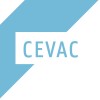
Intralesional Bleomycin Versus Cryotherapy for Treatment of Cutaneous Warts
Cutaneous WartsThe purpose of the study was to determine the efficacy of intralesional bleomycin in comparison to cryotherapy on participants having cutaneous warts.

Low Dose Cyclophosphamide Treats Genital Warts
Genital WartCondylomata acuminata (CA) caused by human papillomavirus (HPV) is a common sexually transmitted disease with half a million new cases diagnosed in the United States per year. Recurrence is a major challenge for CA treatment. The investigators have demonstrated that FOXP3+ regulatory T (Treg) cells mediate the immunosuppression in large genital warts. And low-dose cyclophosphamide (CY), a conventional chemotherapy drug, has been reported to selectively deplete Treg cells in cancer patients. Therefore, the investigators hypothesized that low-dose CY can be used to treat genital warts. In this study, 104 CA patients have been recruited for clinical trial with a 1:2 randomization. Among them, 64 patients received low-dose cyclophosphamide and 32 received placebo. In 8 extra patients, high-dose cyclophosphamide was given.

A Trial Investigating the Effect of a Treatment With Zinkgluconaat for Verrucae Vulgares
Verrucae VulgaresA Double-blind, placebo-controlled trial investigating the effect of a treatment with zinkgluconaat for verrucae vulgares

Safety and Effectiveness Study of an Experimental Topical Ointment (GS-9191) for the Treatment of...
Genital WartsThe purpose of this study is to assess the safety, tolerability and activity of GS-9191 ointment in the treatment of genital warts. GS-9191 ointment is intended for topical application directly to genital warts on the skin.

Four Week Safety and Efficacy Study With a Topical Gel to Treat Common Warts in Adults
WartsThe primary purpose of this study is to evaluate the effectiveness in adults, of four different strengths of resiquimod gel applied to common wart(s) three times a week for four weeks. A second purpose is to evaluate the safety of the drug.

A Study of A-101 Topical Solution for the Treatment of Common Warts
Common WartPhase 3 Study of A-101 Topical Solution in Subjects with Common Warts

Infrared Bioeffect System for the Treatment of Cutaneous Warts
Cutaneous WartsHuman Papilloma VirusLocal hyperthermia at 44℃ can promote some alterations of immulogical indicators. The procedure is convenient in clinic, has high tolerance with less trauma and less pain. Based on domestic and abroad clinical practice, the investigators observed initially that local hyperthermia brought great benefits to cutaneous warts. In comparison with liquid nitrogen, the safety and efficacy of controllable infrared bioeffect system to treat skin disease has been evaluated. This proved it could be used in treatment of skin warts, and clinical trial met the requirements of Standards for quality control of clinical trials on medical devices, and can be used in product registration and declaration.

CyPep-1 in Cutaneous Warts
Cutaneous WartsThis Phase 1 study is intended to explore the safety, tolerability, pharmacodynamics and efficacy of topical CyPep-1 as a potential treatment for HPV-associated conditions. Since this is a first-on-human study of a topical formulation, the first subjects will be monitored more frequently in order to establish the safety profile. Because clinical outcomes (i.e. reduction/clearance of the lesion) often require lengthy treatment / observation periods, the study design will primarily utilize clinical measurements of wart dimensions, along with HPV viral load as a biomarker of anti-viral effect.

Cold Atmospheric Plasma Device for Pediatric Molluscum and Verruca
Verruca VulgarisMolluscum Contagiosum Skin InfectionThis study is going to test a cold atmospheric plasma device (CAP), in particular a floating electrode-dielectric barrier device (FE-DBD), to treat warts and molluscum. The treatment device in this study generates cold atmospheric plasma (gaseous ionized molecules) to rid the virus from the body. Based on the successes of previous dermatologic studies, FE-DBD is being tested for this study to treat warts and molluscum. Patients will be enrolled to test the efficacy and safety of this device. The duration of the study is 4-12 weeks depending on treatment clearance. The number of lesions will be chosen by the dermatologist. Patients will receive standard of care therapy and/or NTAP depending on the number of lesions.

Comparison of Cryotherapy and Peeling Agent in the Treatment of Common Warts
WartsObjective: To compare the efficacy of cryotherapy using liquid nitrogen (cryoget method) versus trichloroacetic acid 90% (applicator method) in treatment of common warts. Study Design: Randomized Control Trial. Place And Duration of Study: Department of Dermatology, CMH Abbottabad from Jun 2022 to Nov, 2022.
